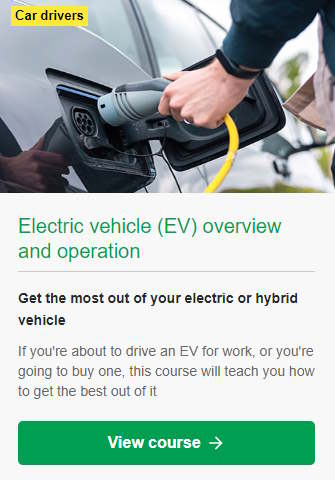One advantage of an electric vehicle is that it can generate power that is fed back into the battery when it is coasting (i.e. foot not on the accelerator) or braking. This is called regenerative braking. EVs allow the driver to pick exactly how much braking effect is applied to the car when the driver’s foot releases the accelerator enough so that the car would not usually maintain its speed or accelerate.
Regenerative braking can recoup a few percent of the battery – it might be the difference between making it to the charging station and not. One-pedal driving is a feature designed to maximise regenerative braking. It means that any time you release your foot at all off the accelerator, the car will brake. The more you lift your foot, the more the braking effect; this is similar to you changing down a lot of gears in a manual gearbox.
If you take your foot off the accelerator completely, it will brake to a stop. The effect is sufficient enough that in everyday driving you will not need to touch the brake pedal at all. The brake lights are activated when the car is slowing down so that the loss of speed doesn’t surprise vehicles behind.
Why is one-pedal driving good?
- It takes every opportunity to recapture energy from the car’s motion.
- It reduces wear on the brake pads and discs because they are used infrequently.
- There’s no delay between when you lift your foot off the accelerator to when the braking effect starts (this could mean the difference between averting a crash and having a crash in an emergency braking scenario).
Why is one-pedal driving bad?
- Being a good driver relies (in part) on your maintaining a set of skills that include braking when necessary. If you get out of the habit of moving your right foot across to the brake when you need to slow down, will this affect your reaction time if you need to brake for an emergency? If your vehicle has autonomous emergency braking, this might not be a problem if it can stop you in time for an obstruction in the road, but it may not help if you needed to brake more for a sudden bend in the road.
- It takes a while to get used to driving smoothly with it because every release of the accelerator is magnified; ‘coasting’ is no longer gentle deceleration, it’s like braking.
- While getting used to it, drivers are using more battery power because deceleration happens more frequently than is desired. You use more battery energy accelerating than you recoup braking. For the first little while, it’s likely that the range will be less.
How can you learn how to drive an EV better?
EVs require a different driving style to internal combustion engine vehicles. You can learn all this in our online EV driving course. Click the link to the left to view it. You’ll get better range and a smooth drive from the knowledge you gain in this course, ultimately saving you money.


